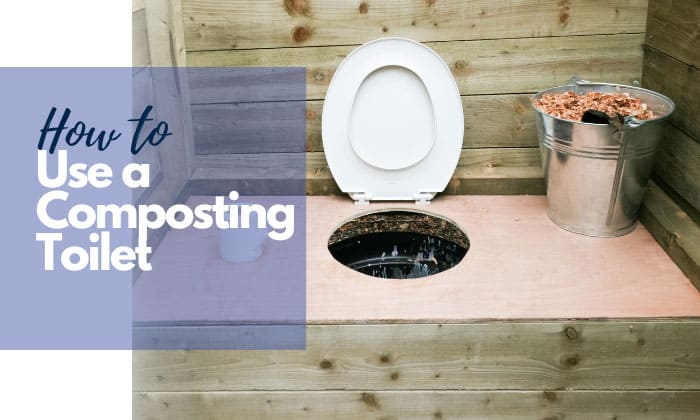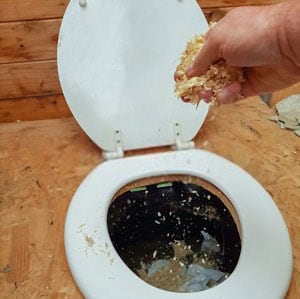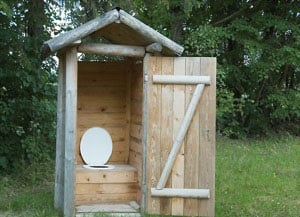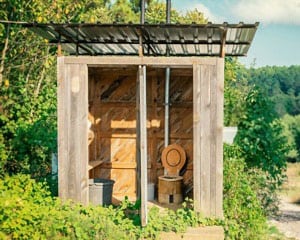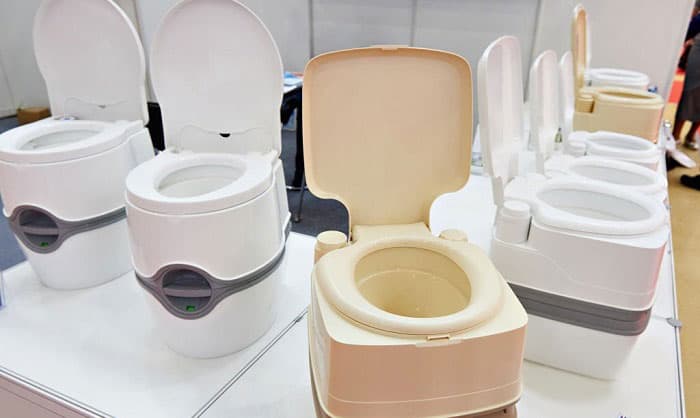Composting waste is not a new concept. Nowadays, it resonates with everyone who thinks of waste generated that contaminates the environment. For the eco-conscious, living and creating waste is a serious issue. You eat, enjoy, poop, and dump. No excuses. In life, one makes waste.
But are there ways on how to use a composting toilet to get the best of the waste you make? Gladly, there are. Here are the methods and ideas you can undertake to convert waste into a beneficial natural resource.
Table of Contents
What is a Composting Toilet?
A composting toilet is a structure and system that converts human wastes such as poop and pee through an organic activity known as composting. Other organic materials such as leaves from your yard, kitchen scraps, lawn trimmings, and even spoiled food can be used as well as compost stuff.
Bacteria and fungus act as natural decomposers, which break down organic compounds into usable matter. Since it does not need water when used as a waste dump, it is commonly known as a dry toilet or waterless toilet.
Its by-products can be utilized as fertilizer for agricultural purposes, as garden-soil additives, and as mulch in landscaping projects.
The following steps present the procedure on how to make the best composting toilet for that ideal waste conversion project.
Read more: Dry flush vs composting toilet: what is the difference?
5 Steps to Use a Composting Toilet
Step 1: Place the compost elements
Prepare your toilet by lining the bottom with an inch thick of any of the following materials: sawdust, dried sphagnum peat moss, coconut hull, or straw. Sawdust is an excellent option since it’s good at absorbing moisture and liquid. Besides, it’s fairly cheap and easily available.
Make sure the liner you assemble is damp, crumbly, and thick enough to draw in the waste or organic matter deposited. Never put a soupy or wet liner in place.
Step 2: Solid and Liquid Separation
Most composting toilets have two separate chambers for liquid and solid wastes, preventing foul smell.
After pooping, get yourself properly cleaned using either tissue or wipes. Throw your used tissue into the waste bin afterward. The combination of human waste with the organic base will then allow for aerobic bacteria to convert the mixture into usable fertilizer.
On what to do with the urine waste collected, just allow evaporation to occur and get the odor to dissipate.
Step 3: Mixing to generate even decomposition
The collecting chamber in most toilet systems incorporates a mixing mechanism that allows the waste and organic liner to combine and decompose.
Stirring permits the mixing of solid wastes with the damp base. Take note, poop and piss need to be separated for decomposition to work properly.
When mixing the solids, you can just turn the crank on the side of the toilet. This should mix and aerate the compost elements simultaneously.
If there’s a ventilator installed, air circulation hastens the drying of solid waste and prevents stinking.
Step 4: Emptying Procedure
You should regularly unload solid waste compost mix from the chamber every 2-3 weeks. The aqueous component needs emptying every 2-3 days. This is to dissipate any possible build-up of stench.
If a foul smell builds up, masking it up is done by mixing 2 tablespoons of sugar to the liquid waste.
To clean the urine jug, put in about 2-3 cups vinegar, a handful of rough pebbles and shake it thoroughly until the stains are removed.
You can also opt to spray a vinegar solution onto the solid mixture to regulate built-up stench.
Step 5: Discarding the waste
The final step is and will always be the most critical. In doing this, ensure to dispose of all the collected waste into just one compost stockpile.
Collect all the decomposing matter into a biodegradable bag. A plastic bag is inadvisable as you mix organic matter and plastic material.
To achieve good compost matter, allow the mixture to achieve an ideal temperature of 122°F (50𝆩C) for a week to kill all pathogens. Let it settle for a year for complete decomposition to happen.
FAQs
Where do you dump the content?
For the liquid waste collected, the collection jug can be unloaded to any septic system. Just bring the jug to a public restroom and empty its contents into the toilet.
You can bring it as well to the dump station to unload, and do not forget to clean the jug afterward using water and vinegar.
How to empty a compost toilet?
To empty your composting toilet, remove the bottom tray or receptacle and dump the waste accordingly. The organic heap mixture loses much of its volume during composting, making it necessary to empty the tray once every 2-3 weeks.
This frequency depends a lot on the number of users and the rate you use your compost toilet.
How often do you empty a composting toilet?
It depends on the usage rate and volume. If only 1-2 persons use it, a 2-3 weeks window for solid wastes is fine. For the liquid wastes, every 2-3 days is recommended.
If there are more people using the system, you should monitor and dump composting toilet effluents more frequently.
Can insects get into the composting toilet?
If the system is prepared and maintained well, no insects can enter the composting toilet. Keeping the wastes dry and covering them up with a tight-fitted lid prevents insects from crawling in.
Do composting toilets have a bad smell?
None, if prepared and used correctly. Putting in the right ingredients will dissipate any foul smell from the decomposing mixture.
Proper maintenance of your composting system eliminates all potential nasal pollution. Keeping the liquid separate from the dry waste also ensures that decomposition doesn’t stink.
Is having a composting toilet recommended for most households?
It depends. Several critical factors must be in place if you are to consider having your own composting toilet.
- One is location. Your place and system must be secure enough to be well-ventilated and safe from possible intruders.
- Second is system maintenance. You need to use the right materials and provide adequate support to keep your compost’s integrity.
- Lastly is your attitude to be genuinely eco-friendly. A composting toilet is one project to support a more balanced environment together with human activities.
What are the advantages and disadvantages when using a composting toilet off-grid?
For campers wanting their own composting camper toilet, its advantages include minimal energy consumption, eco-friendliness, and low cost.
On the other hand, its disadvantages include more complex maintenance, possible health hazard if the system is compromised, the potential for foul smell, and impracticality.
In using a composting toilet for RV, ensure that its electrical connections and ventilation are properly attached and installed. Otherwise, you will not maximize its benefits.
What are the necessary precautions when using a composting toilet?
For any composting toilet, never ever add any chemicals such as bleach or ammonia as this kills beneficial bacteria that break down waste. Even if you suffer from an apparent composting toilet diarrhea and are taking antibiotics, do not use the toilet as your medicine will kill the microbes.
For DIY composting toilet systems, remember that your set-up can remain prone to composting toilet smell. Need not worry as it is not an outhouse structure.
Are there toilet brands that stand out from the others in the market today?
Among the brands available, the Nature’s Head composting toilet works better than the others for being well-built and for the availability of its parts.
Besides, it is well known to be a good fit for boats and RVs. It’s also good in a tiny house as long as you have 110 V AC power source and a good ventilation connection.
Conclusion
Creating useful matter from human waste is both ideal and challenging. Using a composting toilet is an option to realize this.
With the threat to the environment appearing real from the waste humans generate, the necessity to create eco-friendly waste products becomes indispensable.
With this guide, you now know how to use a composting toilet to your advantage converting human waste to environmentally useful by-products.

I’m Paulk Webb, and I work as a writer for Saveourwaterrebates. I’m happy to put in the time and effort to conduct market research to identify the most pressing issues faced by households concerning their plumbing. Feel free to check out our guides to get the most informed recommendations for how to solve your problems.


